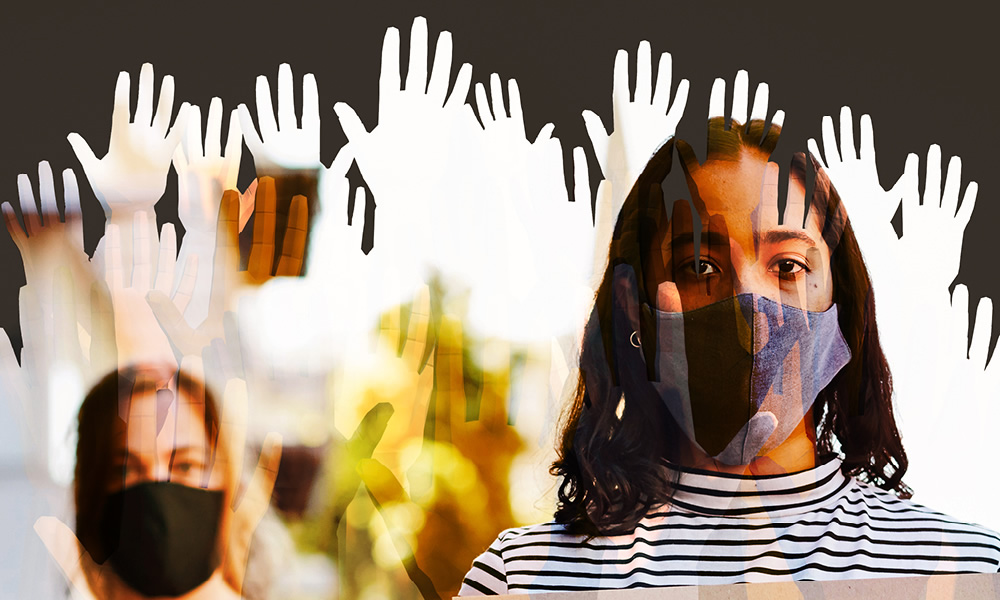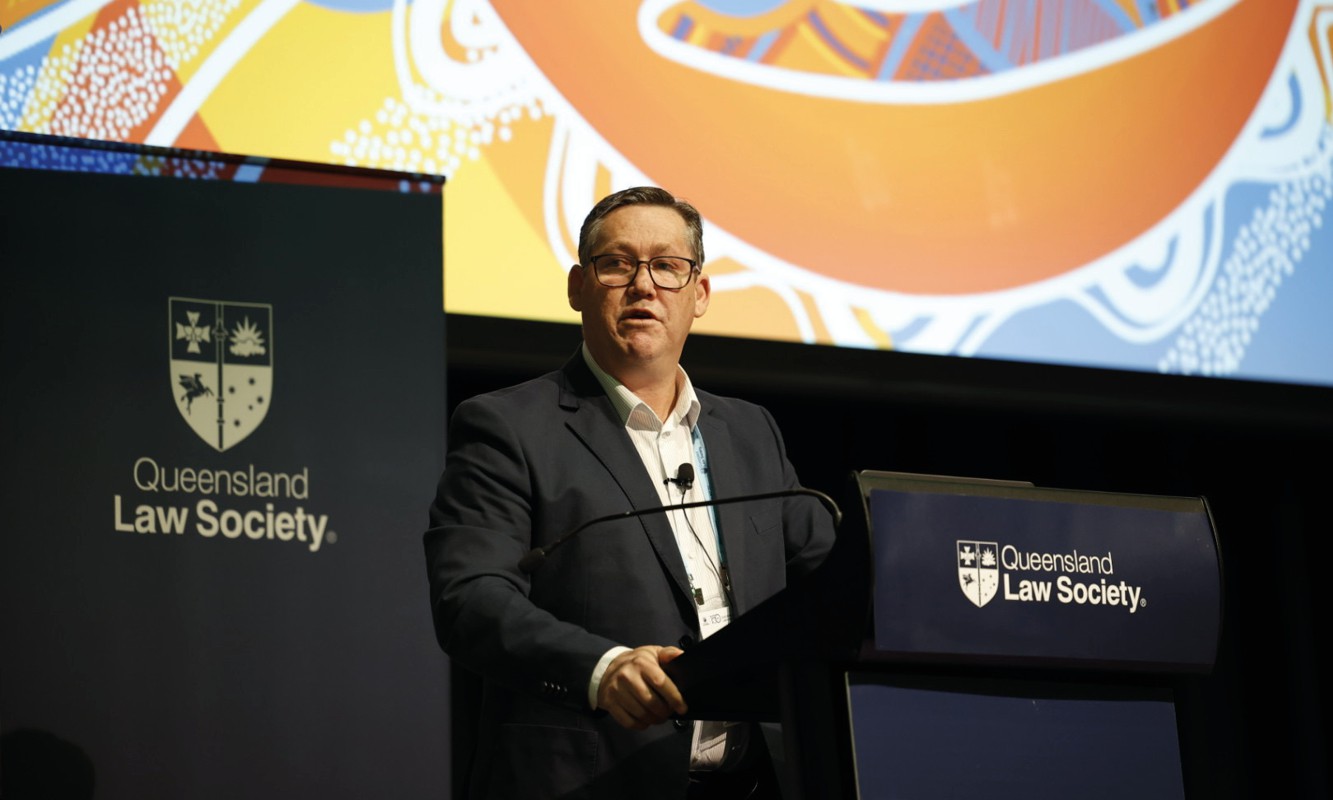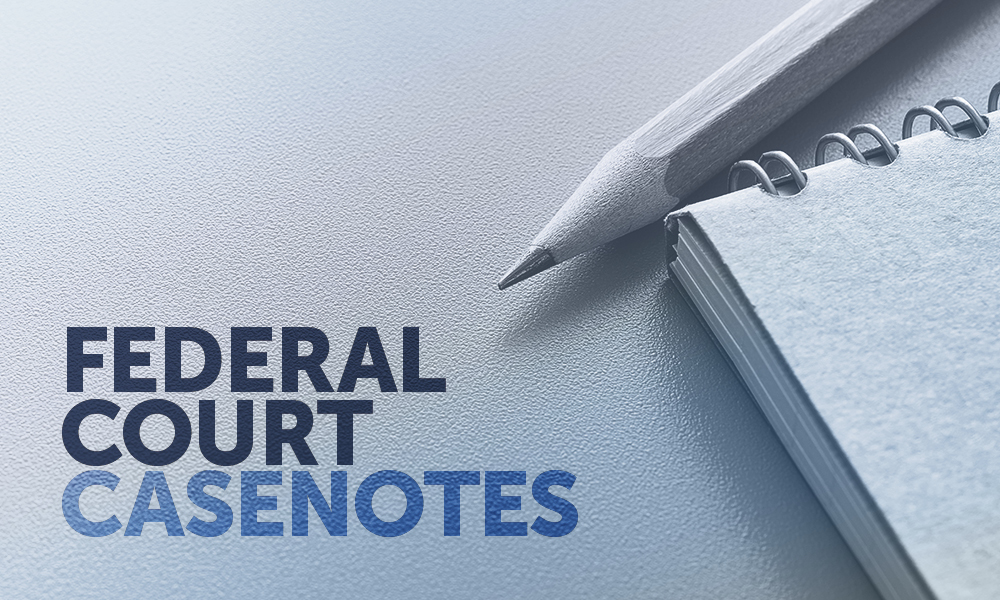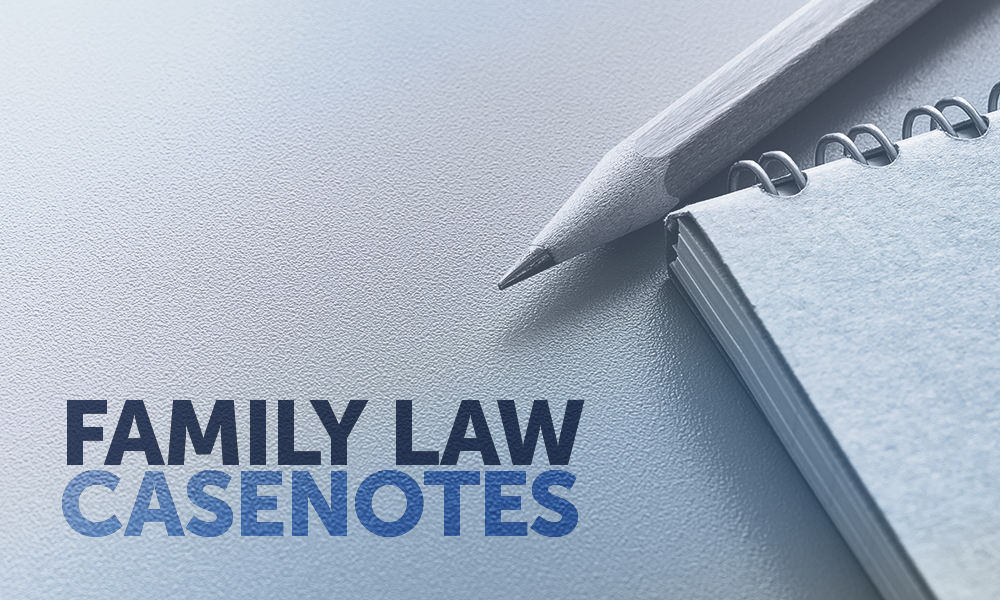On 1 January 2020, we welcomed the commencement of the Human Rights Act 2019 (Qld) with its primary objective to build a culture in Queensland where human rights are understood, respected and protected. Before commencement, we predicted there was much to do for those instructed by the legislation as being in charge of bringing about the cultural change:
- the legislature would be required to table all new legislation with a “compatibility statement” describing the human rights impacts of new laws;1
- public entity decision-makers, every day, would be required to update their processes to ensure they could act and make their decisions compatibly with the human rights;2
- Courts would be charged with assessing the compatibility of laws, interpreting the meaning of the human rights, and in performing the role of adjudicating decision-maker compliance in ‘piggy back’ legal challenges;3 and
- the Queensland Human Rights Commission would be able to accept and conciliate complaints about human rights, and to publish information arising from those complaints.4
We are now almost one year into the new regime and early signs are promising that human rights are having a practical and meaningful impact on the development of new laws, public sector decision making and the decisions of Queensland Court and Tribunals.
Management of a pandemic
In the infancy of the coronavirus pandemic, on 29 January 2020, the Minister for Health and Ambulance Services declared a “public health emergency“ under the Public Health Act 2001.5
One key purpose of the public health legislation is to authorise limitations on individual rights and freedoms to protect greater public health. The amending legislation6 inserted a new Part 7A into Chapter 8 of the Public Health Act 2001 to expand and strengthen the powers of emergency officers and to enable the Chief Health Officer to issue directions to individuals, and make recommendations to business, to help contain and respond to the spread of COVID-19. A failure to comply with a public health direction of the Chief Health Officer was made an offence, punishable by a fine of up to $13,055.7
The compatibility statement tabled with the amending legislation provided a detailed analysis of human rights considerations explaining the need to protect human life by imposing “reasonable and demonstrably justifiable” limitations on other human rights, such as rights to liberty, humane treatment when deprived of liberty, rights to privacy, freedom of movement, protection of families and children, cultural rights, freedom of association and a number of other civil and political freedoms.8
The powers have been used effectively to regulate and constantly update rules about social distancing, gathering together at sporting and music events, religious centres, in restaurants and private homes as well as to detain, isolate and quarantine people with suspected or known exposure to coronavirus. These measures have been largely commended by the Queensland Human Rights Commission which has noted the importance of the safeguards for individual freedoms provided by the Human Rights Act 2019.9
The special cultural rights of Aboriginal people and Torres Strait Islander people
The preamble to the Human Rights Act 2019 acknowledges the special importance of human rights to Aboriginal and Torres Strait Islander People with their distinctive spiritual, material and economic relationship and traditional connection with lands, territories, waters, coastal seas and other resources.
The cultural rights for first Australians are articulated in section 28 of the Human Rights Act 2019, and these have been highlighted in a number of compatibility statements for legislation passed during 2020.
Forest Wind Farm Development Act 2020
The compatibility statement tabled with legislation to allow for the construction and operation of a wind farm in State Forest areas near Rainbow Beach, went to some lengths to assess the impacts on special cultural rights held by our first Australians. It discussed the objective of the wind farm to contribute to the State Government’s renewable energy targets and noted that security of tenure was essential in order to attract investment of around $2B.
In acknowledging there may be impacts on the special cultural rights of Butchulla People and Kabi Kabi People, in particular, having examined a number of alternatives, no less restrictive way of achieving the State’s purposes was identified. A statutory condition precedent was enacted to ensure the inclusion of existing native title rights in the giving of an access licence or project lease, by registration of an Indigenous Land Use Agreement (ILUA) under the Native Title Act 1993 (Cwlth). An ILUA must be entered with the consent of all parties, thus allowing for negotiation, and preserves compensation entitlements under the Commonwealth native title scheme.
Meriba Omasker Kaziw Kazipa (Torres Strait Islander Traditional Child Rearing Practice) Act 2020
The Queensland Parliament also introduced special legislation to recognise and enshrine the traditional child rearing practices of Torres Strait Island People, where under private family agreements, parental responsibility may be passed from birth parents and assumed by close and trusted cultural parents. The Meriba Omasker Kaziw Kazipa Act 2020 is regarded as promoting the objectives of the special cultural rights in the Human Rights Act 2019 as it provides an application process for the legal recognition of, and enabling decisions to be made, in accordance with longstanding Ailan Kastom. The compatibility statement addressed several human rights impacted by the legislation including the protection of families and the best interests of children, Torres Strait Islander peoples’ cultural rights, and the right to a fair hearing (to justify why some applications may need to be closed to the public).
Human rights and climate change
The decision of Waratah Coal Pty Ltd v Youth Verdict Ltd & Ors10 highlights the importance of the Human Rights Act 2019 to environmental causes and the increasing momentum for advocates, seeking to redress climate change issues, to frame their cases in human rights language.
Waratah Coal Pty Ltd has applied for a mining lease and an environmental authority to develop a thermal coal mine in the Galilee Basin. Youth Justice lodged objections with the Land Court with grounds that it would be unlawful under section 58 of the Human Rights Act 2019 to approve the applications.
Waratah Coal’s arguments
Waratah Coal applied to have the Youth Justice objections struck out because human rights objections were not within the Land Court’s jurisdiction. Waratah Coal argued:
- The Land Court’s recommendation on an application for a mining lease or an environmental authority is not an ‘act’ or a ‘decision’ as those terms are used in section 58(1) of the Human Rights Act 2019.
- It is beyond the Land Court’s jurisdiction to consider objections based on the Human Rights Act 2019.
- The Land Court cannot consider Human Rights Act 2019 objections in the absence of a claimed right or remedy under the piggy back provisions of section 59 of the Human Rights Act 2019.
- The objectors do not have standing to make such a claim under section 59 of the Human Rights Act 2019 because they are corporate entities and only individuals possess human rights.
Key takeaways
In a detailed decision by the President of the Land Court, it was held that:
- The Land Court was acting administratively to perform functions conferred under legislative instruments and so, for these purposes, the Land Court itself was a public entity and required to act and make decisions compatibly with the Human Right Act 2019.
- The terms “act” and “decision” should not be construed narrowly. A recommendation by the Land Court made under the Environmental Protection Act and the Mineral Resources Act 1989 can be interpreted as both an act and a decision.
- The human rights objections were considered as within jurisdiction (and squarely raising issues that the Land Court needed to consider), but importantly, the requirement for the Land Court to take into account the human rights applied, irrespective of whether human rights objections had been lodged.
- If the Land Court did not properly account for human rights impacts, there would be options to take legal action under section 59 of the Human Rights Act 2019 at a later time. Arguments about the standing of Youth Justice not being individuals would become relevant then.
We expect to see greater scrutiny of human rights impacts in applications for mining and similar projects with likely environmental and cultural impacts. It will become increasingly prudent for applicants to ensure that human rights considerations are dealt with on a front end basis to assist public entity decision makers, including the Land Court, in the application and approval processes.
Interpretation by the Supreme Court
The Supreme Court has been called upon to interpret statutory provisions under section 48 of the Human Rights Act 2019 (butits role in performing that function did not fully arise on the facts) and to weigh up human rights considerations when ordering an injunction to prevent a planned political protest.
The Australian Institute for Progress Ltd v The Electoral Commission of Queensland11
The Australian Institute for Progress (AIP) is a Queensland based think tank which sought a declaration from the Supreme Court that it be allowed it to accept donations, in a certain way, from property developers which might be otherwise prohibited under the Electoral Act 1992 (Qld). Initial advice obtained from the Electoral Commission was that AIP would breach the Act by accepting the donations.
In the outcome, His Honour Justice Applegarth declined to make any orders regarding the declarations because the arguments presented were hypothetical rather than factual.
It was accepted that the political donor prohibitions in the Electoral Act 1992 (Qld) might limit human rights protected by the Human Rights Act 2019, such as freedom of expression12 and the right to take part in public life.13 Helpfully, the Court discussed how the proportionality test for limiting human rights, through the combination of sections 8, 13 and 48 of the Human Rights Act 2019, should be applied.
- First, the application of section 48 of the Human Rights Act 2019 involves two aspects of statutory construction: (a) the consistency of an interpretation with the statutory provision’s purpose; and (b) an interpretation which is ’compatible with human rights’.
- Second, the Court noted that section 8 of the Human Rights Act 2019 is unique to the Queensland human rights legislation and states that an act, decision or statutory provision is ’compatible with human rights‘ if it: (a) does not limit a human right or (b) limits a human right only to the extent that is reasonable and demonstrably justifiable in accordance with section 13 of the Human Rights Act 2019.
- Third, in considering whether the prohibited donations would be a reasonable limitation under section 13 of the Human Rights Act 2019, the Court noted that a prohibited donor is still free to engage in political discussion by other means than through donations, including by running its own advertisements. The purpose of the prohibitions to prevent corruption and undue influence in government can be regarded as consistent with a free and democratic society based on human dignity, equality and freedom.
As the provisions could be interpreted in a manner that was compatible with human rights, section 48(2) of the Human Rights Act 2019 did not arise for consideration.14
Attorney-General for the State of Queensland v Sri & Ors15
The Supreme Court was also called upon by the Attorney-General to order an urgent injunction to restrain parties from attending or encouraging others to attend a planned sit-in protest on the Story Bridge at noon on 8 August 2020. At the time, as noted above, Queensland was in the midst of responding to the COVID-19 pandemic and a number of public health directions were in place to prevent mass gatherings. The matter was heard and determined by His Honour Justice Applegarth at 10.30am on 8 August 2020.
There was evidence that the proposed sit-ins had been advertised on Facebook posts which included: “We’re going to walk onto the Story Bridge, sit down in the middle of the road and refuse to move until our perfectly reasonable demand is met.”; “It’s time to engage in mass civil disobedience.”; “This means deliberately disobeying laws to highlight and prevent further injustice.”; “When we walk onto that bridge, police will likely try and stop us, tell us to move, threaten to arrest us, but we will do it anyway.”
The submissions on behalf of the Attorney-General included historically framed equitable grounds to enforce and protect “public rights” including to pass and repass on roads.16 It was observed, however, that rights about peaceful public assembly in public areas might now be more easily framed under the Human Rights Act 2019. After detailed discussion about the conduct proposed (not a peaceful ‘procession’17 but a ‘public meeting’ on a thoroughfare), and the limitations on the human rights likely to be impacted, by applying the section 13 proportionality test,[18] the injunctions were ordered ex parte.
Justice Applegarth observed that in appropriate cases, the inconvenience of a protest can be managed, and in a democratic society we must all tolerate such inconvenience. The issue here was not, however, the inconvenience of a planned event19 but a plan to block the entire bridge for an indeterminate length of time. The “risk to life and limb [was] obvious” with other users including emergency services and the lawful activities of small businesses and families. The inconvenience was not minimal, but significant and long lasting and with a plan to engage in civil disobedience. Justice Applegarth commented:20
… it is apparent that a sit-down by a large number in the middle of the Story Bridge would be completely inconsistent with [the public right to pass and repass upon roads]. It would be also inconsistent with the individual rights of citizens to travel on the road; as I have said, rights that are longstanding and are recognised in the Human Rights Act. The Human Rights Act is of relevance in the present context. I have had the advantage of helpful submissions concerning some of its complexities. I can leave those complexities to one side. It is important to focus upon the relevant rights, both of the organisers and those who would wish to take part in the planned sit-down on the Story Bridge, as well as the rights which that Act confers on other citizens.“
Incidentally, because the orders were made ex parte, and due to the imminence of the planned sit-in, Applegarth J made orders that the injunctions could be served by text message.
Building on the Queensland human rights culture in 2021
On reflection, it has been a very productive first year for building the Queensland human rights culture. The human rights are being considered and applied every day by our public sector decision makers and are having increasing relevance in routine decisions of the Queensland Civil and Administrative Tribunal, including for guardianship, tenancy and other matters involving the protection of families and children.21
So far, the compatibility statements tabled with new and amending legislation contain detailed analyses of predicted human rights impacts and tend to demonstrate the commitment of our legislature to accepting and respecting the human rights and to promoting a human rights dialogue in Queensland.
While there has been limited activity to date in the Supreme Court, there has been a steady uptake of the human rights complaints process in the Queensland Human Rights Commission which we expect will increase progressively with key complaint themes developing and being publicly reported in 2021.22
We look forward to year two of the Human Rights Act 2019 and potentially a more active role for the Supreme Court in its interpretation and adjudication functions with the opportunity for advocates to incorporate international human rights lessons into Queensland’s emerging human rights case law.
1 Section 38, Human Rights Act 2019 (Qld)
2 Section 58, Human Rights Act 2019 (Qld)
3 Section 48, 49, 59, Human Rights Act 2019 (Qld)
4 Sections 64, 79 and 90, Human Rights Act 2019 (Qld)
5 Section 319, Public Health Act 2001 (Qld)
6 Public Health and Other Legislation (Public Health Emergency) Amendment Act 2020
7 Section 362D, Public Health Act 2001 (Qld)
8 Compatibility Statementfor the Public Health and Other Legislation (Public Health Emergency) Amendment Act 2020
9 Queensland Human Rights Commission, Submission to Queensland Parliament Health, Communities, Disability Services and Domestic and Family Violence Prevention Committee, 6 July 2020
10 [2020] QLC 33
11 [2020] QSC 54
12 Section 21, Human Rights Act 2019
13 Section 23, Human Rights Act 2019
14 Section 48(2) of the Human Rights Act 2019 provides that if a statutory provision cannot be interpreted in a way that is compatible with human rights, the provision must, to the extent possible that is consistent with its purpose, be interpreted in a way that is most compatible with human rights.
15 [2020] QSC 246
16 Cooney v Kuringai Corporation (1963) 114 CLR 582 at 605.
17 Discussed in earlier High Court cases as no more than a number of individuals exercising, in aggregate, the individual right of each to pass along the thoroughfare: per Isaacs J, Melbourne Corporation v Barry (1922) 31 CLR 174
18 Freedom of movement (s19), freedom of thought, conscience, religion and belief (s20); freedom of expression (s21); peaceful assembly and freedom of association (s22); and taking part in public life (s23), Human Rights Act 2019
19 For example, under the Peaceful Assembly Act 1992 (Qld)
20 [2020] QSC 246 at [26] to [27]
21 Storch v Director-General, Department of Justice and Attorney-General [2020] QCAT 152; NN and IN v Department of Child Safety, Youth and Women [2020] QCAT 146; RE and RL v Department of Child Safety, Youth and Women [2020] QCAT 151; The State of Queensland through DPHW v Tenant [2020] QCAT 14
22 Queensland Human Rights Commission, Annual Report, 2019-20, which notes that in the first six months of 2020, many complaints were unable to be accepted as they predated commencement.












Share this article